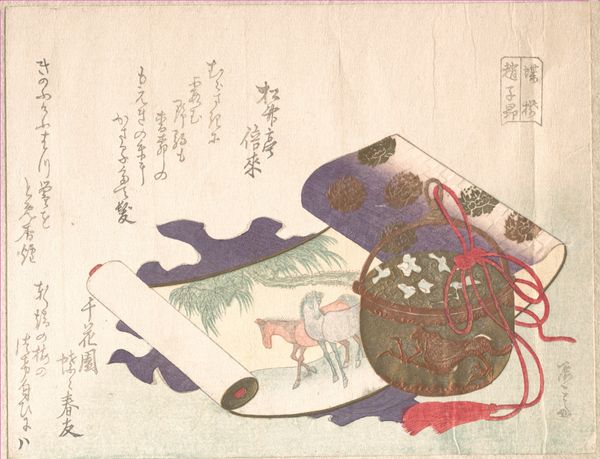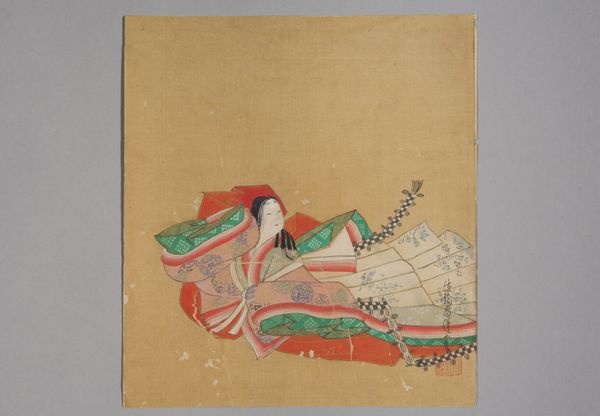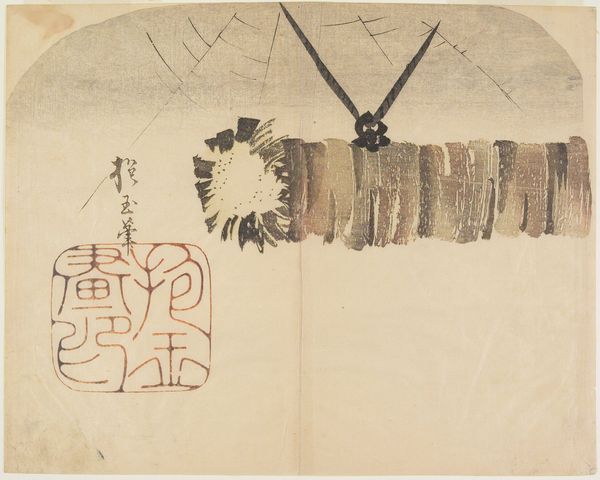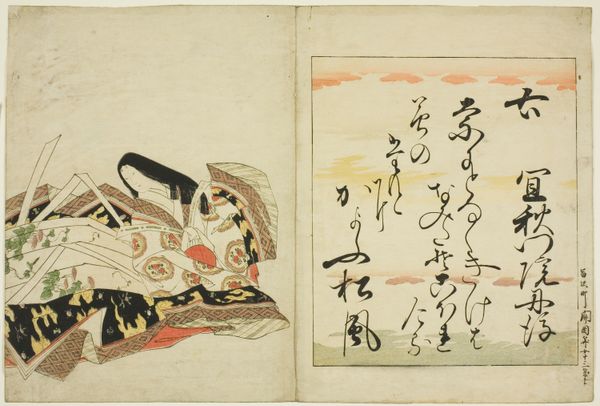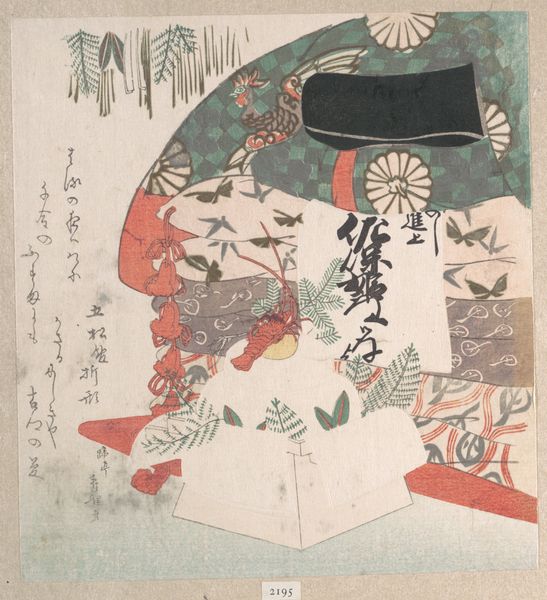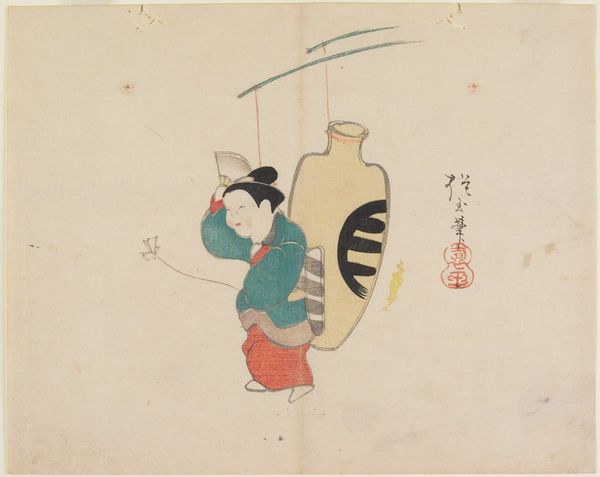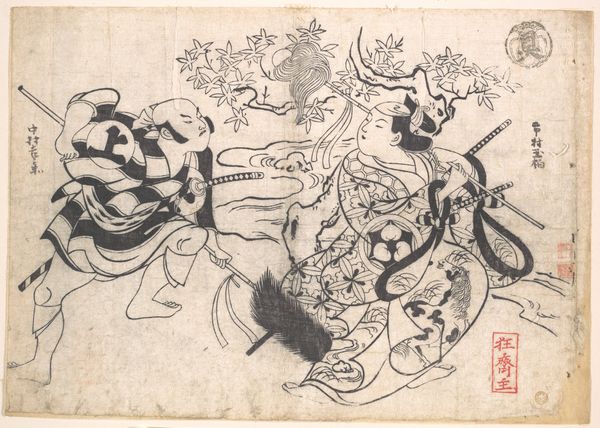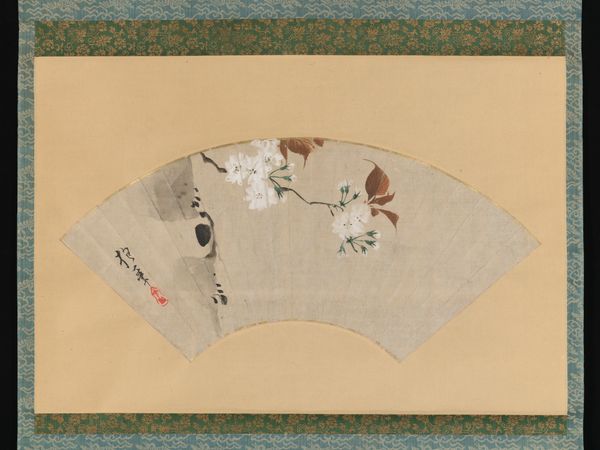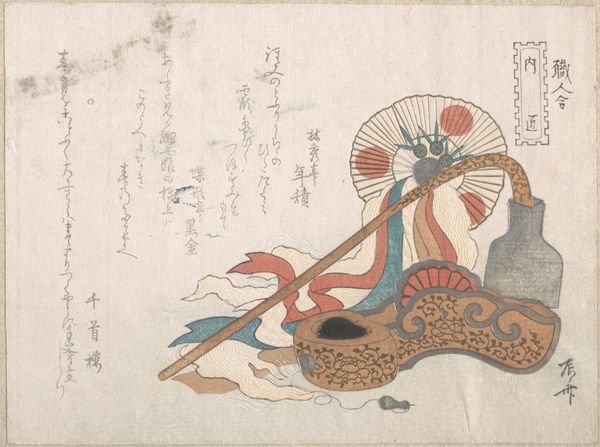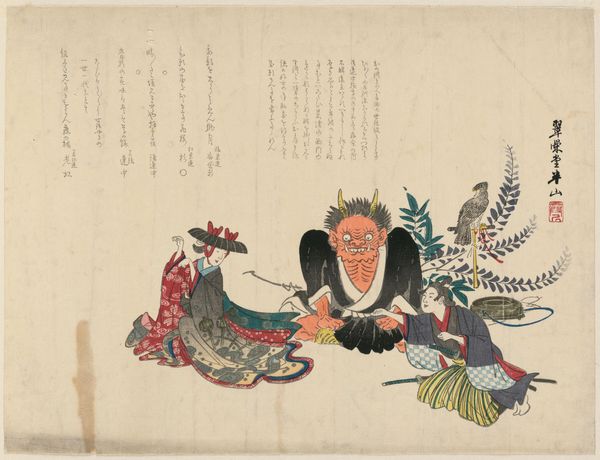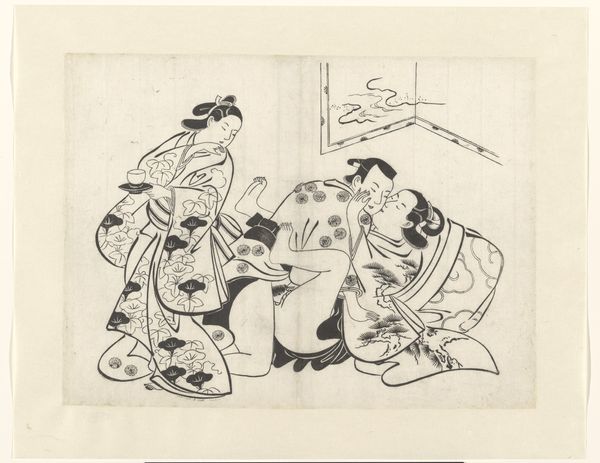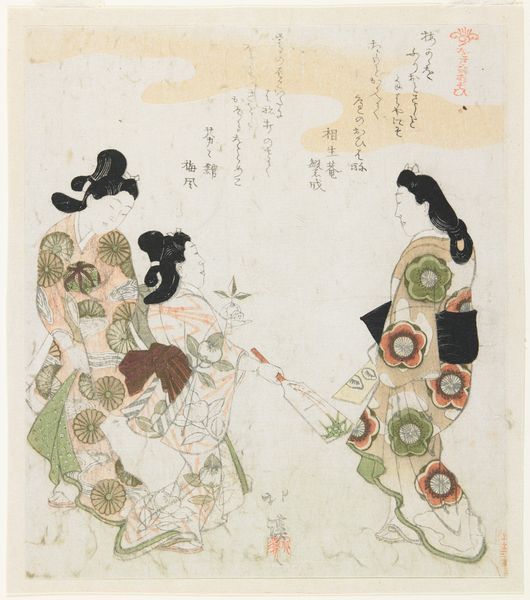
drawing, print, ink
#
portrait
#
drawing
# print
#
asian-art
#
ukiyo-e
#
ink
Dimensions: 9 3/8 × 11 9/16 in. (23.8 × 29.3 cm) (image, sheet, uchiwa-e)
Copyright: Public Domain
Yamada Hōgyoku created this woodblock print called Wisteria Maiden in 19th century Japan. It’s printed on thin paper, made to be mounted on an uchiwa, or a rigid fan. Japanese art of this time was deeply affected by the country's social structure, dominated by the shogun and the samurai class. Artists frequently depicted scenes of daily life, popular culture, and classical literature. The printmaking industry was regulated by the government through official guilds and censorship. Hōgyoku was a member of the Osaka-based Shijō school, known for its emphasis on direct observation and realistic depiction. In this context, the image of the maiden, a popular motif in Japanese art and literature, can be read as a reflection of the leisure and cultural interests of the merchant classes who were gaining prominence in urban centers like Osaka. To fully appreciate this work, a historian can look at collections of popular literature, playbills, and other printed ephemera. The meaning of art is contingent on social and institutional context.
Comments
minneapolisinstituteofart about 2 years ago
⋮
By the 19th century, the simple paintings produced in O_tsu had become famous throughout Japan, and artists of other schools sometimes imitated the O_tsu-e style. Hogyoku, an artist of the Shijo School, borrowed the wisteria maiden, a theme commonly rendered by O_tsu-e artists, for this woodblock-printed fan. His own artistic pedigree is evident only in the slight softening of the outlines and colors. Otherwise, he imitates the rough, exuberant style of O_tsu-e.
Join the conversation
Join millions of artists and users on Artera today and experience the ultimate creative platform.
